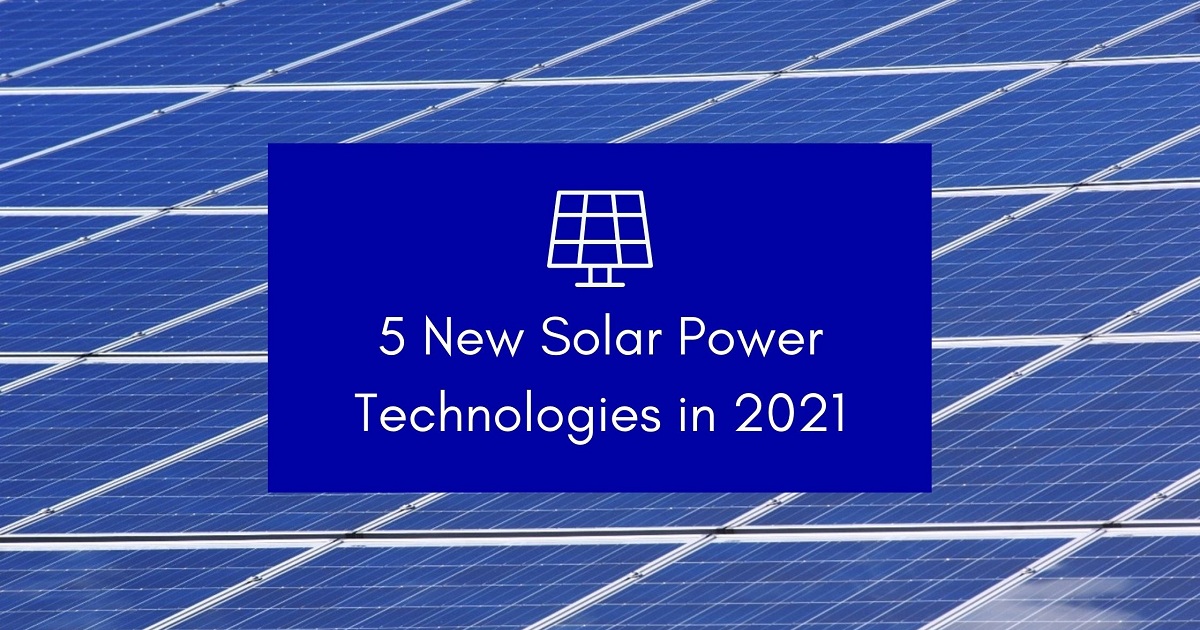
Energy, Industry Updates
Article | July 29, 2022
Earth has become increasingly warmer every year with rising temperatures. The burning of fossil fuels in the past 150 years for electricity, heat, transportation, and any other human activity has increased greenhouse emissions. Other natural resources are also rapidly depleting, thus giving us a cause of worry.
Several homeowners and mainly businesses are, therefore, turning to renewable energy sources to become self-sustainable and self-reliant. Costs of commercial electricity are rising day by day with no end in sight. By turning to green energy, businesses can reduce operational costs and reinvest that amount back into their businesses.
If your business uses electricity for lighting, HAVC, computing, or production, opting solar for businesses will significantly reduce the cost. Installing these solar panels and combining them with an appropriate energy storage system, your business can save up to 20 to 25% energy and move towards energy independence.
Eligibility for Going Solar
One of the major factors to consider when going solar is whether it makes sense for your business to do so. Apart from this, going solar would be ideal for organizations that:
Work in states like California, Hawaii, or any state that either has expensive energy or massive Federal incentives
Have enough land, rooftops, or parking lots adjoining their businesses where the solar panels can Be set up
Have prioritized sustainability
Have massive energy demands
Market themselves as an environmentally friendly business
Reasons to Use Solar Power for Businesses
Growing businesses opt for investing in commercial solar power mainly to aid in offsetting additional expenses. With the expansion of the business, electricity consumption will also increase. You can also time your roof repairs or new constructions to coincide with installing new solar panels. Transforming into a business that chooses to become carbon-neutral by utilizing solar energy will enhance your business image in the community.
Implementing commercial solar panels cuts down your energy consumption and helps increase your savings. Excess energy generated by these solar panels can be stored with the help of off-grid batteries. Solar energy has a major drawback. Your company won't be powered at night or in severe weather conditions as solar only works during the day. Solar energy cannot handle the sudden power surges required to handle heavy machinery. Businesses are then forced to purchase and use commercial electricity to manage these spikes. However, these spikes can prove to be expensive. Merging photovoltaic systems with storage solutions can ease these spikes. This is vital during the "shoulder" hours when the sudden surge spikes can lead to demand charges.
Benefits of Going Solar
Reduction in Costs
The single biggest advantage of going solar is a massive reduction in electricity bills. Locations where 'net metering' is available can become another source of revenue for your business as the excess power produced can be sold to your local utility. Businesses, and companies that rely on out of date energy sources like coal, could be paying 7 to 30 cents per kilowatt-hour (kWh), whereas those using solar energy were paying between 2 to 12 cents per kWh.
The benefits of switching to solar depend on several factors- locations, industry, and business size. The most advantageous enterprises would be the ones who have built an appropriately sized system to cover all energy requirements and enough power to fall back on during peak consumption hours.
Businesses can incur additional charges due to demand and delivery. Utility services apply these charges to recover costs of purchasing energy and maintaining power lines and energy lost in the transmission system. Moving power sources closer to your business will help you avoidsuch preventable expenses.
There are possibilities of ascension in solar energy projects. You can start with a smaller set of solar panels that would contribute to your daily energy needs and build it over time. You can always sell the excess energy produced to your local utility provider as a source of additional revenue.
Federal Tax Incentives
As of 2021, the investment tax credit (ITC) allows businesses to deduct 22 percent of the cost of installing solar energy systems from their federal tax with no cap on its value. These businesses are eligible for the tax incentive as long as they have their energy system. I'f youdon't have enough tax liability to claim the credit that year, the outstanding credits would roll over to the next year, so long the tax credit is in effect.
Durability
Like every other power source, solar has its limitations too. The infrastructure that can consume excess solar power is not yet up to the mark. Since solar is tied to the grid, they are interdependent. If the grid fails, solar goes down too. Therefore, it is important to add a microgrid to the energy system.
Adding a micro-grid detaches your business from the utility providers and makes it independent of their services. It makes your organization what is known as an 'energy island'. The existence of these energy islands only protects your enterprise from power cuts due to natural disasters or any physical or hacking attacks. Your energy islands may also provide electricity to your local community during emergencies.
Sustainability
Solar energy has a massive role to play in the future of sustainability and environmental protection. By converting your business into a solar-powered business, you ensure the protection of the environment and reduce your company's carbon footprint on the planet. Studies also indicate that using solar energy for a long time also reduces utility costs. You can then invest the saved amount back into your business to promote advancements and innovations.
Being a solar-powered business could be an alluring prospect for your potential business partners. Environment-inclined customers tend to turn to prefer "responsibly green" businesses, and these businesses also appease local and state regulators, governments, and hedge funds.
Lower Maintenance Cost
Another major reason solar power is beneficial for your business is low to zero maintenance of the installed solar panels. Agencies that provide solar panels offer a warranty of 20 to 25 years on them. Since solar panels have fewer movable parts, the chances of these parts disintegrating or rusting are highly unlikely as opposed to technology that relies on movable parts. Thus, switching to solar energy would be the appropriate step to take for your business.
Things to Keep in Mind when Switching to Solar
When investing in solar energy, there are a few imperatives that businesses must follow. No matter the size, your business must be located where there is adequate sunlight, a roof strong enough to sustain the panels, and be inclined to reduce the cost of all operations.
There are various simple 'do-it-'yourself' kits launched in the market to entice small business owners to try and build these solar systems themselves.
However, it is essential to work with a solar provider when installing solar panels to get the best outcome—as in any industrial field, consulting with a solar power expert would help you optimize costs and gain maximum benefits.
Points to Explore Before Going Solar
Amount of Electricity Consumed
There are two main points to ponder over; "enough for one day" and "future years to come”. You could either sell excess energy produced to your local electricity supplier, which would add to your savings, or it could be stored with the help of li-ion batteries and utilized in the time of little to no sunshine.
Financing Solar Power for Businesses
Commercial solar power providers offer multiple business plans that would be best suited to the scale of your business. You can choose the better alternative for your business depending on how much discretionary cash you have and your solar infrastructure size. The size of the infrastructure will also depend on whether you want to gain dramatic results in terms of cost-saving or opt for low-cost start-ups and gain a more extended return on investment.
Some enterprises buy solar equipment with cash or loans. This method would give you tax credits and incentives, thus offering you a higher return on investment (ROI).
Another direction you could choose is going into a Power Purchase Agreement (PPA) with a solar energy provider and purchasing electricity from them at a lesser commercial cost. In a PPA, the developer looks after designing, permissions, financing, and installing the system for a meager amount.
Details of your precise business requirements are vital to analyze the cost and time of ROI of the solar energy system. It would depend on the place you are at and the size of your system. To get these exact details, hire the best solar energy consultant for your exact needs.
Important Steps to Remember
Step 1:
Outline your goals for a stable, sustainable, and financially sound future. Make sure that going solar is beneficial for your business. Calculate whether your region's utility costs are higher and hurt your business financially; whether there is ample storage space around your business to keep all the equipment. And whether adopting a green profile improves your goodwill in your local community.
Step 2:
Collect data on your electricity usage of at least one year to analyze the operating cost, energy spikes, and consumption patterns. Calculating business losses will aid in understanding the need to switch to solar energy.
Step 3:
Tie up with a commercial solar specialist when making the switch to solar energy. Often, customers fail to recognize the importance of this step. Avoid contractors who set up solar panels as a side business as they would not understand the intricacies of the job. Check all the references before you partner up with a specialist.
Step 4:
Last thing to keep in mind is thatgetting a solutions provider would make things easier for you. The provider will take care of everything- designing the system, finances, grid connection, and system maintenance. Ensure that you have a provider with sound support and has a portfolio of proven experience in solar infrastructure per your business needs.
Frequently Asked Questions
How much does solar cost?
Ten years ago, the cost of a residential solar system was upwards of $50,000 for an average of 6 kilowatt-hour. Now, with a 62% average annual decrease, it ranges anywhere between $16,200 to $21,000.
How does commercial solar work?
Solar panels are made up of photovoltaic (PV) panels in a grid-like pattern that captures sunlight and converts it into electricity. The PV cells are made up of silicon with a positive and negative field that creates an electric field.
Are commercial solar panels worth it?
Commercial solar panels have a lifespan of 25-30 years. Although solar panels cost a lot initially, over the years, utility cost of your business will go down. There are also tax credits and incentives that the government offers when installing solar panels.
{
"@context": "https://schema.org",
"@type": "FAQPage",
"mainEntity": [{
"@type": "Question",
"name": "How much does solar cost?",
"acceptedAnswer": {
"@type": "Answer",
"text": "Ten years ago, the cost of a residential solar system was upwards of $50,000 for an average of 6 kilowatt-hour. Now, with a 62% average annual decrease, it ranges anywhere between $16,200 to $21,000."
}
},{
"@type": "Question",
"name": "How does commercial solar work?",
"acceptedAnswer": {
"@type": "Answer",
"text": "Solar panels are made up of photovoltaic (PV) panels in a grid-like pattern that captures sunlight and converts it into electricity. The PV cells are made up of silicon with a positive and negative field that creates an electric field."
}
},{
"@type": "Question",
"name": "Are commercial solar panels worth it?",
"acceptedAnswer": {
"@type": "Answer",
"text": "Commercial solar panels have a lifespan of 25-30 years. Although solar panels cost a lot initially, over the years, utility cost of your business will go down. There are also tax credits and incentives that the government offers when installing solar panels."
}
}]
}
Read More

Solar+Storage
Article | June 8, 2022
Cleaner energy resources are the dire need of the hour and this is a known fact. While scientists and experts across the planet are striving hard to reduce our reliance on fossil fuels, our energy needs have never faced a downfall- thanks to rapid industrialization and urbanization. Although renewable resources like solar, wind, and hydro-electric power are the most popular alternatives, these are seasonal energy sources and the energy production from the same will not be similar all around the year. The fluctuations in production hence cannot always meet the energy demand of the population, and this makes the renewable energy sources not completely reliable.
Solar Production v/s Demand of the same in a year
What and How H2 is produced?
Now, this is where Hydrogen- the first element of the periodic table comes to the spotlight with a solution. Being a gas, hydrogen fuel can very well cater to our energy needs and is produced from techniques including Thermochemical, Solar-Water splitting, electrolytic and biological processes. While the production of this cleaner energy source leaves a carbon footprint of about 830 million tonnes in the form of CO2 annually, the result being a zero-emission fuel is what makes H2’s future bright.
Storage of H2 – the million-dollar question:
Having almost cleared the need and methods of producing hydrogen fuel, we will be looking at an area that is usually not given much thought about and that is the storage of H2. As already mentioned, for time being let us consider hydrogen as an alternative to renewable resources which is utilized when the energy demand increases drastically. While producing the fuel in the nick of time is obviously undoable, sufficient storage of H2 anticipating the demand is the best choice. Like Natural Gas, Hydrogen is also compressed before storing to achieve lower volume and also because liquid hydrogen demands a 64% higher amount of energy for storage than its compressed gaseous counterpart.
Storage tanks v/s Geological landforms:
Compressed Hydrogen can be stored in surface storage vessels (like steel composite concrete vessels and in wind turbine towers) or in geological landforms like (salt caverns, depleted O&G reservoirs, and aquifers). Nevertheless, unlike the underground geological landforms which offer huge storage capacity owing to their sheer scale, the storage tanks which can range in size from a small bottle to a huge tank require high amounts of pressure to store an appreciable amount of H2 in it. Since these storage tanks are usually constructed on the surface, the pressure conditions in these tanks need to be artificially stimulated and thereby mount huge upfront costs when compared to their geological storage counterpart.
H2 storage prices in Geological Landforms v/s Storage Vessels (in $/kg)
The above is a table comparing the prices of Hydrogen storage in Geological landforms and Storage Vessels at different pressure conditions. It is visible from the table that it's about 218 times cheaper to store the same amount of hydrogen in Geological landforms than in storage vessels.
Is geological storage truly a better option?
Like any other storage option geological storage too has its pros and cons. From the erosion of pipelines to the tedious task of injecting the gas and maintaining it at apt pressure conditions, geological storage has its limitations. However, the important prerequisite is the availability of the suitable landform itself.
While most of the Depleted O&G Reservoirs have already met all the requirements for a suitable Underground Hydrogen Storage (UHS) system, the presence of unrecoverable remnant fluids in it makes it both a boon and a bane. This is because the presence of remnant fluids like oil and gas satisfies the cushion gas need for efficient storage of H2 in the reservoir, chances of contamination of H2 by the same is also high. This is the reason why Aquifers too aren’t favorable underground landforms when it comes to hydrogen storage.
Salt Caverns- the best UHS System?
The problem of Hydrogen contamination in Depleted Oil & Gas reservoirs and aquifers leaves us to the next big suitable subsurface landform- salt caverns. Unlike the other two landforms, the problem of contamination can be prevented in these dome-like structures formed due to the upliftment of salt deposits and it is also found that about 98% of its storage efficiency can be used to store Hydrogen here. The reason behind its relatively expensive nature when compared to its other two counterparts is due to the process of salt removing or leaching that must be done before storing to ensure that the contamination of the gas is unheard of at least here.
Suitable Conditions of UHS:
As per Stefan Iglauer, the maximum amount of H2 can be stored at a depth of 1100m beneath the Earth’s surface and the capacity gradually decreases up until 3700 m depth beyond which the wettability of the gas increases as it percolates through the rocks and hence cannot be permanently immobilized. Conclusively it is found that suitable landforms formed at 1km depth can store up to 2.0 Mt of H2. Comparing this 2 MT storage capacity of Salt Caverns with the currently available storage tanks which can store about 800 kg of H2 in it, it is visible that geological landforms have a clear upper hand at least when it comes to storage capacity.
Future of UHS:
With demands for Hydrogen fuel estimated to grow at 5.48 % annually and the need for a suitable storage system of the same at 5.8% annually, the field of Underground Hydrogen Storage systems indeed has a bright scope. Moreover, to meet the large-scale needs of Industries, there is an imminent need to level up the storage capacity of H2 and by exploring suitable geological landforms across the globe, the estimated industrial need of 1200 kT/ year in 2050 can be met.
Read More

Solar+Storage
Article | June 14, 2022
Machine learning and artificial intelligence (AI) are two of the most commonly used commercial phrases these days. As a result, companies across sectors are searching for methods to include them in order to optimize and automate their key operations. The energy sector is no exception!
Indeed, throughout the years, renewable energy industries (wind, solar, hydro, nuclear) have substantially gained from the potential of machine learning. They were able to reduce their expenses, make better projections, and raise the rate of return on their portfolio. And this tendency is just going to gain momentum. If your company is in the energy industry or utilizes a lot of power, machine learning and AI can help you improve your business performance. But how precisely? Let's get started.
Ways in Which AI and Machine Learning are Changing Energy Sector
There are a few methods that machine learning and AI can be applied to positively improve the energy industry. Here are a few popular applications currently under development.
Predictive Maintenance
AI helps match energy output with demand and ensure power grid stability and resilience.In 2003, a low-hanging high-voltage electricity line hit an overgrown tree in Ohio, causing a widespread blackout. There was no power system alarm and no sign of the incident. The electric company didn't notice until three additional power lines failed. This carelessness ultimately brought down the whole grid. The 50 million-person blackout lasted two days. Eleven individuals died, and $6 billion was lost.
Predictive maintenance can be implemented using machine learning and IoT
Sensors gather operational time series data from electricity lines, equipment, and stations (data accompanied by a timestamp).
Machine learning algorithms can then forecast when a component will fail (or n-steps). It can also anticipate machinery's remaining usable life or future breakdown. These algorithms detect machine failure, eliminate blackouts or downtimes, improve maintenance procedures, and reduce maintenance expenses.
Grid Management
Grid management is a promising AI application in energy. Complex networks distribute electricity to users (also known as the power grid). Generation and demand must always match in the electrical system. Other issues, like blackouts and system breakdowns, can occur.
Despite being ancient, pumped hydroelectric storage is the most common way to store energy. It operates by moving water upwards and letting it fall into turbines. Renewable energy makes predicting the grid's power generation challenging. After all, it is affected by a variety of things, like sunlight and wind.
Demand Response
Large demand shifts can be expensive for nations that depend on renewable energy. As nations migrate to green energy, it's harder to adapt to demand fluctuations. Germany plans to use 80% renewable energy by 2050.
Countries such as Germany will encounter two major challenges Demand fluctuations: On some days or times of the year, power consumption soars (on Christmas, for example) Weather volatility: Without wind or clear skies, it might be hard to meet electrical demand. In both circumstances, more stations or fossil fuel-powered facilities must meet demand
Solving demand response issues
Many nations are partnering with businesses to examine weather forecasts, power demand, etc. Germany's EWeLiNE project forecasts wind and solar energy at a specific moment. This enables the government to use non-renewable energy to meet additional power demand.
They utilize enormous historical data sets to train machine learning algorithms, as well as data from wind turbines or solar panels, to properly balance supply and demand.
Closing Lines
AI increases the potential of humans. Several renewable energy producers are investing in artificial intelligence to boost their businesses.There are numerous uses of artificial intelligence in renewable energy. The fundamental purpose of AI integrated systems is to reduce forecasting issues and incorporate renewable energy into the central energy grid as effectively as possible. AI can also assist renewable energy providers in developing successful plans and policies based on present energy consumption and demand.
Read More

Solar+Storage
Article | April 5, 2021
In the last forty years, there has been a dynamic increase in the use of solar energy in the United States. As recently as 2018, an additional 10.6 GW of solar power was harnessed, bringing the country's total use up to 64.2 GW. Yet this apparently successful addition still only contributes 1.6% of the total electricity used across the States. However, with many new solar power technologies on the horizon, the increase could soon be much greater.
Read More